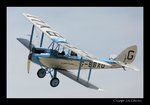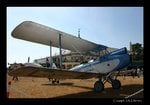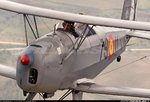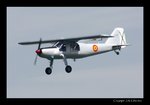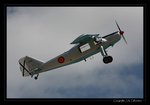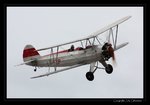The Infante de Orleans Foundation houses the most important collection of historical aeroplanes still flying in Europe. The Foundation was created in 1989 with the mission of collecting and promoting aeroplanes that have played a role in Spanish aeronautical history. In 2006 the Foundation commissioned Lordcultura to conduct a Concept Revision for a new Aviation Museum that will house this important collection of historical aeroplanes. The new museum is to be designed by Foster and Partners Architects, probably on a site at Getafe, 15 km from Madrid, next to a military airport. In 2009, Lordcultura reviewed the Master Plan in order to present it to the organizations involved in securing the financial support of public institutions.
Misions:
- To acquire, restore and preserve in flying condition every plane which, due to its historic characteristics deserves to be mantained operative.
- To create the most extensive collection of aircrafts that have played an important role in the development of Spanish aviation, bringing them back to their deserved status, and preserving memory of them.
- To get and provide a proper maintenance in order to ensure that those planes stay in flying condition as long as possible.
- To promote the means for the exhibition, study, protection and popularization of this material, arranging and being present in meetings, festivals and visiting days which contribute to the expressed mission of the foundation, including a permanent static exhibition.
Planes available:
* 1 De Haviland D.H.60 Moth.
* 1 Fleet 2.
* 1 Comper C.L.A.7 Swift.
* 1 Focke Wulf 44 Stieglitz.
* 1 Polikarpov I-16 Mosca/Rata.
* 2 Boeing Stearman 75 Kaydet.
* 1 British Aircraft Swallow 2.
* 1 De Haviland D.H.89 Dragon Rapide.
* 1 British Aircraft Eagle 2.
* 5 Bücker Bü 131 Jungmann.
* 1 Miles Falcon Six M3.C.
* 1 Bücker Bü 133 Jungmeister.
* 1 Piper J-3 C-65.
* 1 Beechcraft 18 (C-45 H).
* 1 AISA P.E.38 Schulgleiter.
* 2 North American T-6 Texan.
* 1 Piper L-4H Grasshopper.
* 1 Stinson L-5E Sentinel.
* 1 Stinson 108-3 Voyager.
* 1 Piper L-14 Army Cruiser
* 1 De Haviland Canada DHC-1 Chipmunk.
* 1 Beechcraft T-34A Mentor.
* 1 Cessna L.19 Bird Dog.
* 1 Piper PA-20 Pacer.
* 1 Jodel D.119.S Compostela.
* 1 Aisa I-115.
* 1 AISA I-11 B.
* 1 Dornier Do-27/CASA C-127.
* 1 Hispano Aviación HA-200 Saeta.
* 1 Slingsby T.45 Swallow.
* 1 Zlin 526 F Trener Master.
* 1 Pitts S2A Special.
* 1 Polikarpov U-2.
Misions:
- To acquire, restore and preserve in flying condition every plane which, due to its historic characteristics deserves to be mantained operative.
- To create the most extensive collection of aircrafts that have played an important role in the development of Spanish aviation, bringing them back to their deserved status, and preserving memory of them.
- To get and provide a proper maintenance in order to ensure that those planes stay in flying condition as long as possible.
- To promote the means for the exhibition, study, protection and popularization of this material, arranging and being present in meetings, festivals and visiting days which contribute to the expressed mission of the foundation, including a permanent static exhibition.
Planes available:
* 1 De Haviland D.H.60 Moth.
* 1 Fleet 2.
* 1 Comper C.L.A.7 Swift.
* 1 Focke Wulf 44 Stieglitz.
* 1 Polikarpov I-16 Mosca/Rata.
* 2 Boeing Stearman 75 Kaydet.
* 1 British Aircraft Swallow 2.
* 1 De Haviland D.H.89 Dragon Rapide.
* 1 British Aircraft Eagle 2.
* 5 Bücker Bü 131 Jungmann.
* 1 Miles Falcon Six M3.C.
* 1 Bücker Bü 133 Jungmeister.
* 1 Piper J-3 C-65.
* 1 Beechcraft 18 (C-45 H).
* 1 AISA P.E.38 Schulgleiter.
* 2 North American T-6 Texan.
* 1 Piper L-4H Grasshopper.
* 1 Stinson L-5E Sentinel.
* 1 Stinson 108-3 Voyager.
* 1 Piper L-14 Army Cruiser
* 1 De Haviland Canada DHC-1 Chipmunk.
* 1 Beechcraft T-34A Mentor.
* 1 Cessna L.19 Bird Dog.
* 1 Piper PA-20 Pacer.
* 1 Jodel D.119.S Compostela.
* 1 Aisa I-115.
* 1 AISA I-11 B.
* 1 Dornier Do-27/CASA C-127.
* 1 Hispano Aviación HA-200 Saeta.
* 1 Slingsby T.45 Swallow.
* 1 Zlin 526 F Trener Master.
* 1 Pitts S2A Special.
* 1 Polikarpov U-2.




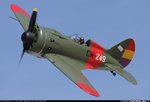














 (for experimental) this was soon changed to Cirrus II Moth, the DH.6
(for experimental) this was soon changed to Cirrus II Moth, the DH.6
